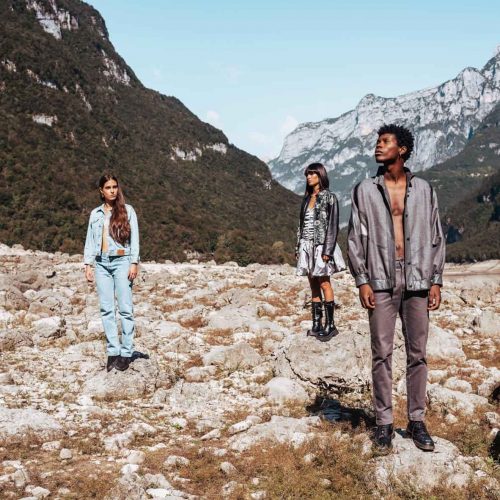Conscious Luxury Trends Report | Consumers Shop More Consciously
Farfetch, the global platform for the luxury fashion industry, publishes its annual Conscious Luxury Trends Report. It shows how luxury consumers are shopping more responsibly to generate environmental awareness and culture, as well as change in the industry.
To receive the Luxiders newsletter, sign up here.
This is great, more consumers are embracing conscious shopping, and thanks to that, the industry is taking the necessary steps to meet their demands and improve in terms of sustainability.
In its Luxury Conscious Trends Report, Farfetch studies the behavior of their customers when browsing their platform and the purchases they make, especially in 2020 during the COVID-19 pandemic, with an increase in luxury customers choosing to shop more consciously. For this, they used several criteria to qualify conscious products. They must be made from certified or independently recognized materials (e.g. organic, recycled and recyclable fabrics, low-impact materials, etc.), have a certified production process, be second-hand or belong to a brand that has good results on Good on You rating agency.
Analyzing the database and surveys created reveals that conscious product sales grew 3.4 times faster than the market average during 2020, and has continued to grow year-over-year using the sustainability filter on Farfetch.com. As well as using services to extend the useful life of products such as Farfetch's Second Life resale service grew 527% year-over-year, which allows consumers to sell their pre-owned handbags (from a defined list of luxury brands) to Farfetch in exchange for credit. It is available in the United States, the United Kingdom, the European Union, Saudi Arabia, Kuwait and the United Arab Emirates.
Farfetch Donate grew 662% year-over-year, a service that allows consumers to dispose of clothing they no longer wear, earn credit to spend on Farfetch and donate to the charity of their choice. It is available in the United States and the United Kingdom.
The number of Farfetch customers who purchased a Conscious Collection product in 2021 increased by 60% year over year.

RESPONSIBLE CONSUMERS AROUND THE WORLD
Mexico was the country with the highest growth in conscious shopping globally with a 341% increase in Conscious GMV 2019/2020. France recorded the highest global growth in conscious shopping with 149% in terms of overall merchandise value. South Korea recorded the highest increase in spending on second-hand goods with 116%. 29% of customers in China made a conscious purchase in 2021.
16% of Farfetch customers purchased a conscious product in 2021. This represents a 60% year-on-year increase. The average age of conscious customers is 32 years old. For general Farfetch customers, the average age is 34. The percentages of conscious purchases by gender is 63% female and 37% male. This percentage coincides with Farfetch's general customers (64% of women and 36% of men).
20% of respondents say they have purchased a second-hand fashion item in the last year. 41% say they are likely to buy second-hand luxury fashion in the future.
The top five brands sold by the resale service were Louis Vuitton, Gucci, Chanel, YSL and Prada.
FASHION FOOTPRINT TOOL
Very interesting is the partnership of Farfetch with IOF.earth, who communicate to customers the contribution to the environment when purchasing sustainable versions compared to standard ones. This tool allows you to see data on each type of material, letting you see the impact on the environment, but compare it to a more sustainable version and how much damage we would save the planet. This is one of their latest initiatives, which allows consumers to make informed decisions when making their purchases and the environmental impact they leave behind.
INTERESTING INFORMATION
01_Conscious purchasing is becoming increasingly popular around the world. The profile of customers who buy conscious items largely matches that of an average FARFETCH customer.
02_Farfetch consumers focus on buying quality and durable items, and consider it part of their efforts to shop more sustainably.
03_Demand for pre-owned luxury items is growing, increasingly attracting high-value customers looking for an element of rarity, often from iconic brands. Spending on second-hand is expected to continue to increase.
04_Many luxury brands are driving measures to improve their sustainability performance, but the steps taken are still at an early stage. For others, much remains to be done.
05_Innovation in data and technology will be key to helping luxury companies make their practices more conscious. Third-party solutions are increasingly emerging that can become enablers in this task.
+ Words:
Carmen Espinoza
Luxiders Magazine




